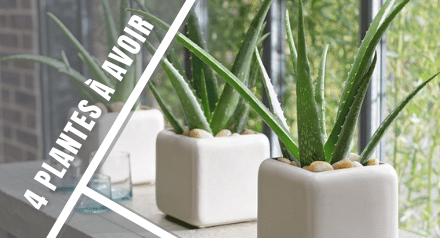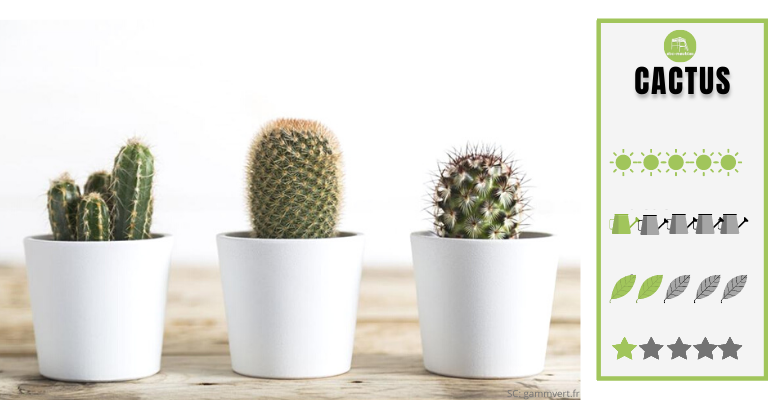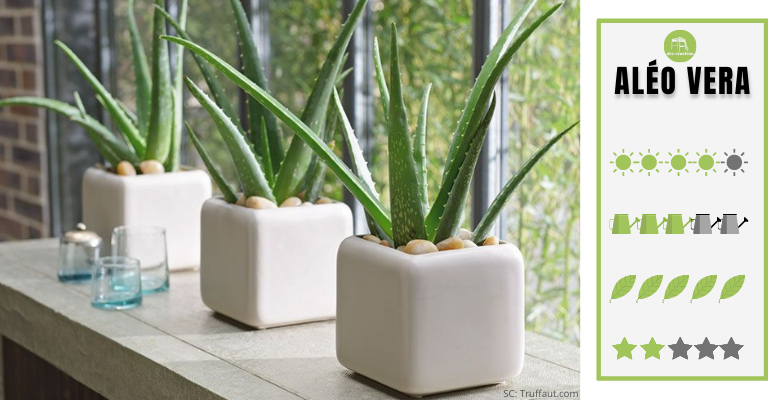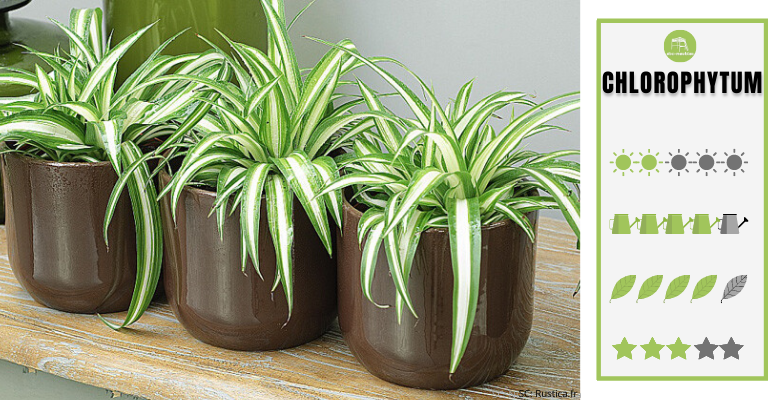4 depolluting plants for your home
If, like us, you like to follow eco-decorating trends on social networks, blog articles and magazines, you have already heard about plant decoration. A concept aimed at making room for green plants, whether living or fake, in our interiors.
You can choose artificial plants to enhance your interior design. They have some advantages: timeless and more easier to maintain! However, living plants have benefits on our ecosystem and environment that make them indispensable.
Just as when choosing ecological furniture to combat formaldehydes, choosing a depolluting plant will help you to combat a number of pollutants and Volatile Organic Compounds (VOCs). ABC Meubles has selected for you 4 depolluting plants for each room of your house: bedroom, office, living room, kitchen and bathroom.
If you are already a Plant Addict, you are not going to learn anything new. However, for budding amateurs or those with a hand of a colour other than green ... this article is definitely for you!
Before giving you our selection and all our advice, there are 3 golden rules to keep in mind.
Rule N°1 : Your needs
Ask yourself why you want a plant. A depolluting, decorative, aromatic plant? Depending on your needs, you will opt for one plant rather than another. They each have their own properties.
Rule N°2 : Its needs
The needs of the plant must also be taken into account. They can be very capricious: light exposure or shady environment, dry or damp atmosphere, heated or temperate room... Your habitat must correspond to its needs.
Rule N°3: Love them and they will flourish!
The level of involvement and maintenance differs according to the plants. But you can do it all the same (even if you don't have a green thumb). Take pleasure in taking care of them and you will see your plants become more beautiful day after day.
A plant for your office: The Cactus
The cactus is the ideal plant for beginners and people who are often away from home. Whether small or large, it is the least restrictive plant you can find!
Preferred room: office and kitchen.
Pollutant : Particularly effective against electromagnetic waves (household appliances, computer, telephone, Wi-Fi...) it will be very useful in an office or kitchen.
Exposure: The cactus only requires a place with light and sunlight, in front of a south-facing window for example.
Maintenance: It will need to be watered once every 2 or 3 weeks (except in winter, watering should be spaced out or avoided. It is now resting). Be careful not to give it too much water, you risk drowning your cactus.
Tip: Ideally, place it in a bowl of water for 10 minutes to avoid getting its trunk wet.
A plant for the bedroom : The Sansevieria
The Sansevieria Cylindrica is more commonly known as the "mother-in-law's language". Despite its atypical name, this houseplant is very easy to live with and requires very little care and attention.
Its favourite room is a bedroom or bathroom (but it also likes all other rooms).
Depolluting : This depolluting plant has the particularity of filtering the air. It purifies the air, especially at night, by producing a lot of oxygen. And its long leaves eliminate toxins (goodbye formaldehyde, benzene, toluene, trichloroethylene and xylene).
Exposure: Its only requirement will be to be exposed to a place with good luminosity (without direct sunlight).
Care: It likes to be watered once or twice a month all year round, except during hot weather (watering 3 times a month, every 10 days on average).
Tip: This is a hardy plant that will survive a few omissions (thanks to its thick, water-soaked leaves). Nevertheless, make sure not to leave standing water in the saucer after watering.
A multi-talented plant for the living room: Aloe Vera
Perfect as a houseplant, Aloe Vera is hardy and easy to maintain, whatever the season of the year.
Preferred room: living room and bedroom.
Depolluting : Aloe Vera is the ultimate decontaminating plant. It has many benefits and properties to purify your home. It considerably absorbs all the carbon monoxide in a room, formaldehyde, benzene, toluene and electromagnetic waves.
That's not all, Aloe Vera is also known to reduce allergies, fight against dust mites and act on your well-being. Its gel also has medicinal, therapeutic, cosmetic and dietetic virtues. An excellent detoxifying, moisturising and healing agent to be used without moderation.
Exposure: Your Aloe Vera will need a great source of light to develop. For its exposure to the sun, it will need to be gradually accustomed to it. Some may fear the sun's rays (dryness of the tips).
Care: Water your plant when the soil is dry on the surface: about once a week in spring/summer and once or twice a month in autumn/winter.
Tip: This is a hardy plant that will survive a few omissions. However, make sure not to leave standing water in the saucer after watering to avoid root rot.
A plant for the kitchen and bathroom: Chlorophytum
Variations in temperature and humidity make these two rooms difficult for most plants. You need to choose a plant that is fairly resistant to changes such as Chlorophytum (also known as 'the spider plant').
Preferred room: kitchen, bathroom, bedroom and hall.
Pollutant: Indoors, this plant is known to eliminate: formaldehyde, benzene, xylene, toluene and carbon monoxide.
Exposure: It will thrive in semi-shaded environments and will adapt to the temperature of your home. It likes humidity and heat but avoid direct heat sources (radiator, fireplace, sun).
Maintenance: Its only constraint is its need for water. Water it regularly, twice a week (except in winter, once a week will suffice). Same as for the 2 previous plants, do not leave standing water in the saucer.
To prevent its leaves from turning yellow or drying out, also remember to spray water on its foliage regularly.
Tip: Only cut off the dead or damaged parts of the leaves (do not pull out completely).
These depolluting plants will help you to sanitize your home. However, they cannot guarantee clean air on their own.
You can make their work easier by adopting a more global approach and simple gestures on a daily basis.














.jpg)
.jpg)
.jpg)
.jpg)